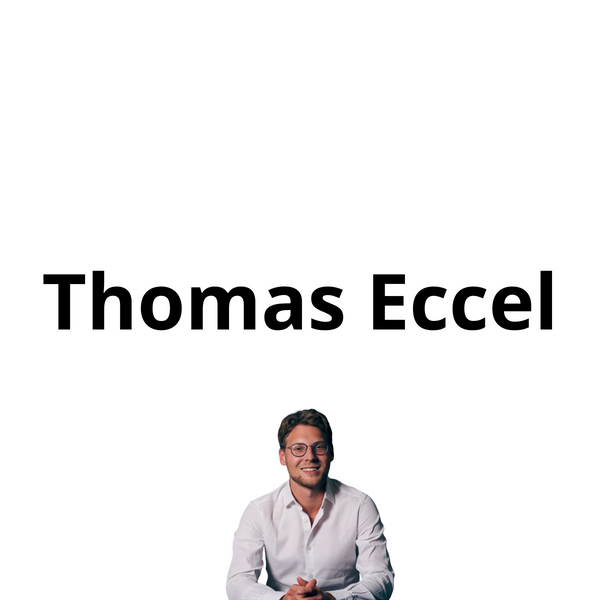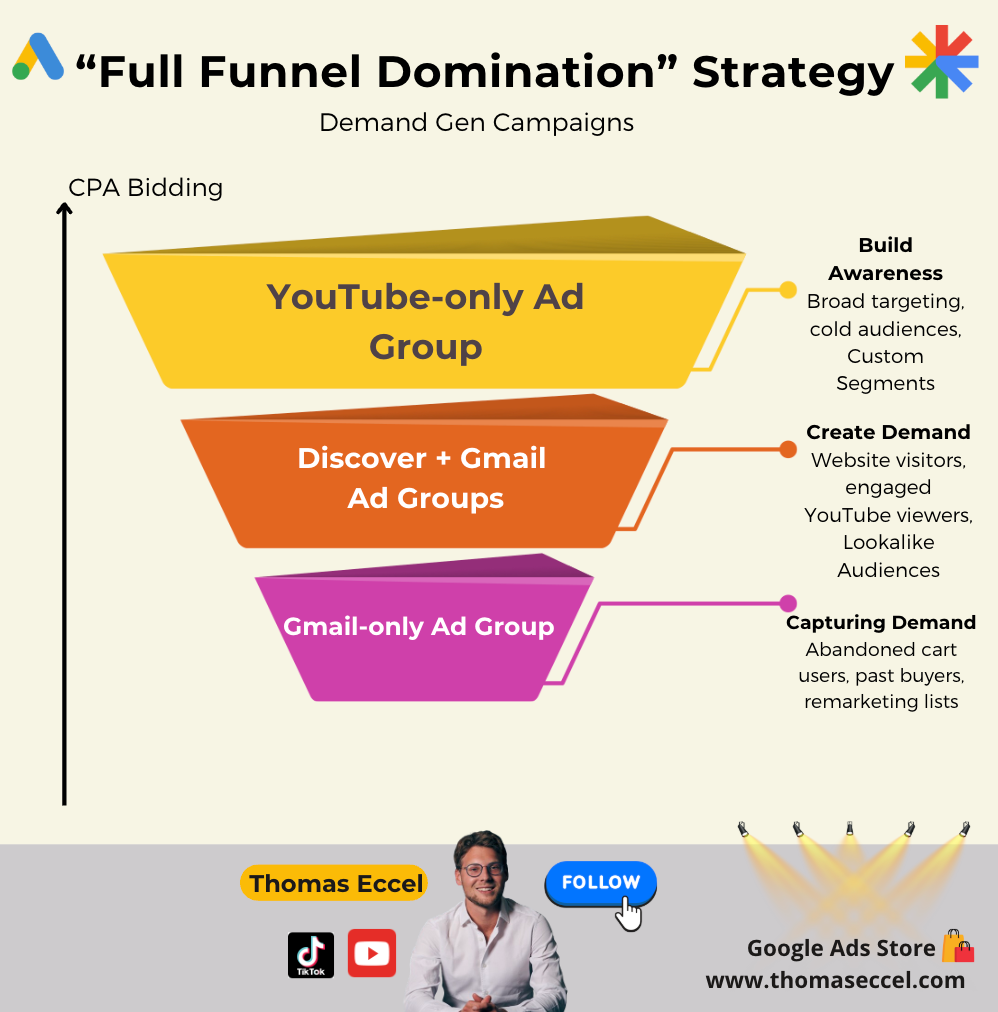Google Ads Demand Gen Campaign Strategy - The "Full Funnel Domination" by Thomas Eccel
Introduction
Google Ads Demand Gen campaigns have evolved significantly, and with the recent Channel Control update, advertisers can now choose specific channels at the Ad Group level. This feature allows for precise audience segmentation and budget allocation, making Demand Gen an even more powerful tool for full-funnel marketing strategies.
In this guide, I will break down the "Full Funnel Domination" Strategy, a structured approach to Demand Gen that ensures maximum impact across the entire customer journey, from awareness to impact.
What is the Full Funnel Domination Strategy?
The Full Funnel Domination Strategy invented by Thomas Eccel is a multi-channel layering strategy that ensures your Demand Gen campaign effectively reaches potential customers at every stage of the marketing funnel.
Instead of relying on Google's default automated channel allocation, this strategy segments Ad Groups by intent level, optimizing for awareness, consideration, and conversion.
Why is this strategy powerful?
✅ More control over budget allocation per funnel stage via Channel Controls
✅ Better creative alignment for each channel
✅ Improved audience segmentation & remarketing
✅ Optimized bidding strategies based on user intent
How to Set Up the Full Funnel Domination Strategy as Demand Gen campaign
1. Top of Funnel (TOFU) – Awareness Stage
Channel: YouTube Ads (YouTube-Only Ad Group)
Audience: Broad targeting, cold audiences, Custom Segments
Best Creative Format: Video Ads (Short & Engaging)
tCPA: High
At the awareness stage, the goal is to reach as many potential customers as possible and introduce them to your brand.
YouTube is the best channel for this phase because it offers a highly visual, engaging, and scalable way to capture attention.
Optimization Tips for TOFU (YouTube Ad Group):
✔️ Use engaging video creatives with a strong hook in the first 5 seconds.
✔️ Test different ad lengths (6-sec bumper ads vs. 15-30 sec in-stream ads).
✔️ Leverage Custom Segments by targeting competitor website visitors or high-intent Google searchers.
✔️ Exclude past website visitors & existing customers (keep this purely for prospecting).
Example: A fitness brand can show a 20-second motivational ad to fitness enthusiasts on YouTube Shorts.
2. Mid-Funnel (MOFU) – Consideration Stage
Channel: Discover & Gmail Ads (Discover & Gmail-Only Ad Group)
Audience: Website visitors, engaged YouTube viewers, Lookalike Audiences
Best Creative Format: High-quality static images, carousels ads
tCPA: Lower than TOFU
The Consideration Stage is where potential customers start evaluating their options. At this stage, Discover & Gmail Ads work best because they allow passive engagement, users come across your ads while browsing Google Discover or checking their Gmail inbox.
Optimization Tips for MOFU (Discover & Gmail Ad Group):
✔️ Use high-quality lifestyle images to make ads visually appealing.
✔️ Test carousel ads to showcase multiple products or features.
✔️ Leverage Lookalike Audiences (for example people similar to past converters).
✔️ Highlight product benefits & reviews to build trust and credibility.
Example: A travel brand can use Discover Ads to show carousel images of popular vacation destinations to users who recently watched travel-related YouTube videos.
3. Bottom of Funnel (BOFU) – Conversion Stage
Channel: Gmail Ads (Gmail-Only Ad Group)
Audience: Abandoned cart users, past buyers, remarketing lists
Best Creative Format: Re-targeting ads (example: "you forgot to ..."
tCPA: Lower than MOFU
At the Conversion Stage, potential customers are ready to make a purchase. Gmail Ads are more effective here because they are similar to email marketing and feel less intrusive compared to other ad formats.
Optimization Tips for BOFU (Gmail Ad Group):
✔️ Use urgency-driven CTAs (e.g., "Last chance – 20% off today only!")
✔️ Personalize messaging based on user behavior (e.g., "You left this in your cart…")
✔️ Retarget past buyers with cross-sell & upsell offers
✔️ Include dynamic remarketing for product-based ads (Demand Gen supports it for product-only ads)
Example: An e-commerce brand can send a Gmail ad promoting an exclusive discount to users who added items to their cart but didn't complete checkout.
Want to take your Demand Gen Campaigns to the next level?
Get my in-depth Demand Gen Optimization Playbook for exclusive advanced strategies and insights.


